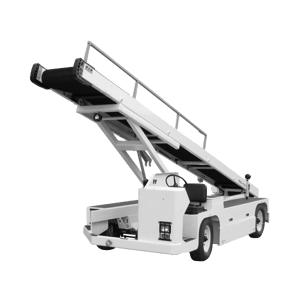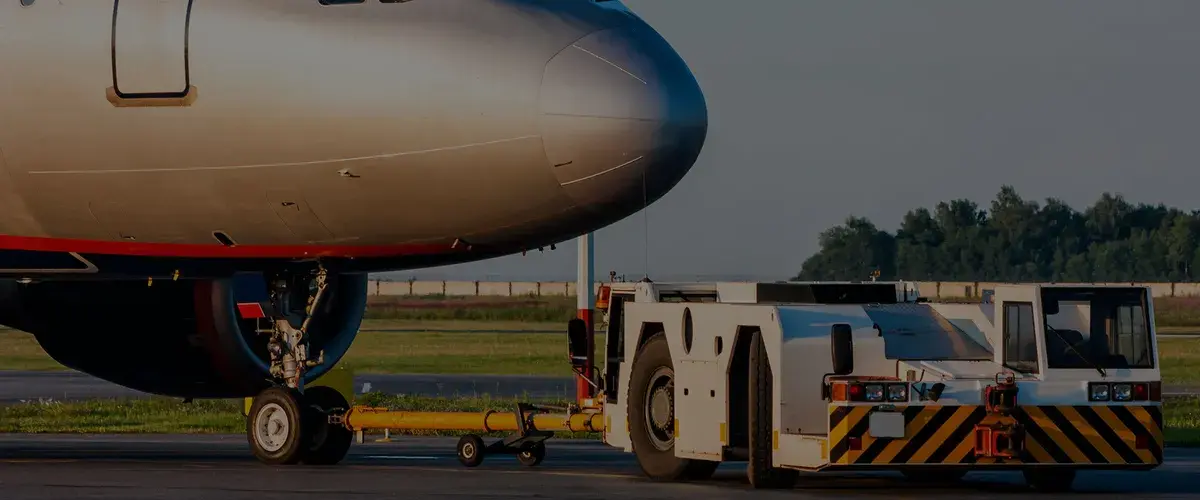As the airline industry continues to try to reduce costs, more airport operations managers are examining the efficiency of their electric ground support equipment.
With nearly 16 million flights handled by the Federal Aviation Administration each year, it’s no surprise that more airlines are focusing on how to increase efficiency, avoid downtime and decrease the costs associated with ground support equipment.
Electric GSE has revolutionized the way ground operations function by providing cleaner and more energy-efficient technology. Though lead-acid batteries once predominantly powered GSE, lithium-ion technology is gaining traction in the airline industry.
Below are some of the most popular types of electric ground support equipment found at airports throughout the United States, and some of the benefits of incorporating cleaner technology into your operations.
GSE Types
Electric GSE is available in several different types of airport equipment, including:
Pushback Tractors
Pushback tractors are very powerful pieces of equipment because they are used to push airplanes away from the gate when they are about to disembark. They sometimes are used for aircraft towing as well, such as to an airport hangar. There are various sizes of tugs, depending on the size of the airplane.
 Belt Loaders
Belt Loaders
Belt loaders feature conveyor belts that are used for loading and unloading baggage and other cargo that is not stowed in containers. Crews position the belt loader at the door of the aircraft’s baggage compartment when in operation.
Container Loaders
Airport ground crew must load and unload cargo quickly and efficiently to keep on the same rigorous schedules airlines strive to keep. Crews use container loaders, which have a platform that raises and a platform that descends, to help them with this task. Wheels underneath the cargo then move the pallets in and out of the aircraft.
Luggage Tugs
Tugs are an essential component of ground support equipment. Crews use tugs to move any pieces of equipment that cannot move themselves. This includes passenger luggage carts.
Lavatory Trucks
These vehicles empty and refill lavatories that are located on aircraft. While in flight, waste is stored in tanks. In between flights, lavatory trucks remove the waste and refill the tanks with a liquid that is a combination of water and disinfectant. While some airports feature self-powered lavatory trucks, others only have carts that are pulled by tug.
Potable Water Trucks
A potable water truck provides an efficient way for crews to transport potable - or safe, drinkable - water to aircraft. After going through a filtration process, the water is stored on the vehicle, safe from the elements. The water truck features a pump that is used to move the water to the aircraft.
Baggage carts
Also known as dollies, baggage carts transport loose baggage, mail bags and cargo cartons between the aircraft and another location, such as the terminal or a sorting facility.
Why Use Electric GSE?
Integrating electric GSE into fleets makes sense for many airline companies, considering how this type of technology thrives in an airport environment. For example, electric GSE are especially efficient when it comes to:
- Frequent starts and stops
- More instances of idle time
- Short required ranges
An additional benefit that electric GSE offers airport ground handling operators is the inching capability. This feature increases accuracy when crews move the tug into the luggage trailer hitch.
According to the National Renewable Energy Laboratory, some auxiliary loads can be more efficiently met by electric power sources, rather than a diesel motor vehicle that is idling. This includes hydraulic lifts that can better access high airplanes.
Why Use Lithium-Ion Batteries?
Integrating lithium-ion batteries into an electric fleet has its own set of advantages as well for ground support equipment crews.
The Flux LiFT GSE Pack, in particular, is capable of integrating with GSE such as baggage and cargo tractors. This allows crews to seamlessly transition GSE when switching to lithium-ion.
Because lithium-ion batteries do not require a separate space for charging like lead-acid batteries do to address safety concerns, electric chargers can be positioned in several locations throughout an airport. This reduces ground support equipment traffic and travel that is non-productive and excessive.
Other benefits include:
- Remarkably fast charging times. In fact, partial charges on an opportunity basis, such as those that occur during work or lunch breaks, are safer and can prolong the life of a lithium-ion battery.
- Energy efficiency thanks to their ability to sustain more power. Unlike lead-acid batteries that bleed energy and lose amps when charging, discharging and sitting idle, lithium-ion batteries maintain a constant voltage throughout the discharge cycle. This leads to as much as a 50% energy savings when compared to lead-acid batteries.
- Environmentally friendly. GSE that still run on diesel and gasoline are some of the worst offenders for carbon emissions and pollutants. Lithium-ion technology, however, offers several environmentally-friendly benefits, including no toxic lead or acid spills, no noxious fumes when charging, zero carbon emissions, and no corrosion, sulfation or contamination.
- Cold weather performance. Because most airports experience at least one cold season each year, lithium-ion batteries provide an added benefit in that they perform well in cold climates. All Flux Power GSE batteries also come with optional heaters that can be controlled by the battery management system, which maintains cell temperatures in their ideal range.
- Cost savings. One of the most important benefits for incorporating lithium-ion batteries in airport operations is the cost savings they provide. Some of the savings you will see include:
- Fewer batteries needed for multi-shift operations
- High energy conversion efficiency
- Up to 25% longer run times than lead-acid batteries
- Charging in-house or where convenient, rather than a separate, additional location
- No clean-up costs since acid spills, corrosion, sulfation and contamination do not occur
- Capable of integrating with GSE equipment, so no need to purchase new equipment
In the United States, you may also be pleased to know the Federal Aviation Administration frequently awards grants to install electric charging points at airports. This helps offset the costs associated with this infrastructure as well, sometimes as much as 50 percent.
Bottom Line
As global air traffic continues to increase, more airports are turning toward using electric ground support equipment as a way to combat rising costs.
Some of the most common types of GSE are available using electric technology, including lithium-ion batteries. Revolutionizing the way ground operations function, this type of GSE provides cleaner and more energy-efficient technology … providing countless environmental benefits and cost-savings features.
FAQs - Airport Ground Support Equipment
Q: What types of electric ground support equipment (GSE) are commonly used at airports?
A. Common electric GSE includes pushback tractors, belt loaders, and container loaders—equipment increasingly supported by lithium-ion battery technology for its efficiency and performance in high-demand environments.
Q: Why are lithium-ion batteries preferred over lead-acid batteries for powering electric GSE?
A. Lithium-ion batteries offer faster charging, longer run times, higher energy efficiency, and minimal maintenance. They also perform better in cold weather and avoid issues like acid spills or off-gassing common with lead-acid systems.
Q: How does electric GSE improve operational efficiency at airports?
A. Electric GSE enhances uptime through quick, reliable starts and stops—ideal for short, repetitive airport routes. Flux Power's GSE battery packs feature inching capability and real-time monitoring to further optimize handling precision and equipment readiness.
Q: What environmental benefits does electric GSE provide?
Electric GSE powered by lithium-ion batteries produces zero emissions and avoids pollutants like nitrogen oxide and carbon monoxide. This reduces airport air pollution and aligns with broader sustainability goals, as noted in this guide to battery recycling and repurposing.
Q: Are there financial incentives for airports to adopt electric GSE?
A. Yes, programs like the FAA’s VALE and AIP provide grants to help airports transition to low-emission technologies, including electric GSE. Understanding total cost of ownership is key to making a strong business case for electrification.
Q: How do Flux Power’s lithium-ion batteries enhance airport ground support equipment (GSE) operations?
A. Flux Power's GSE3 and G80-G2 battery packs are engineered for use in airport equipment like belt loaders and baggage tractors. With features like onboard heaters and the SkyBMS telematics system, they deliver longer run times, real-time charge monitoring, and improved cold-weather reliability—leading to fewer delays and lower maintenance costs.











